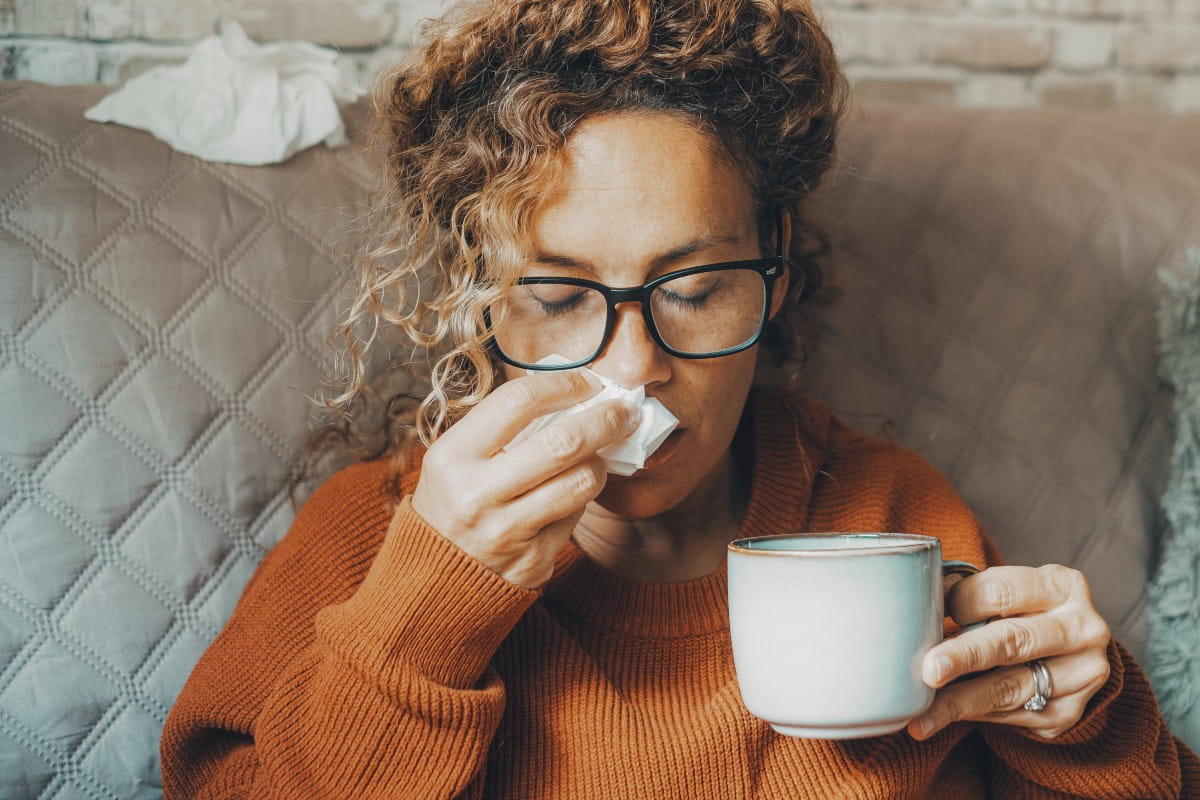Eris and this winter’s other dominant SARS-CoV-2 variants
“This fall, the dominant strains of SARS-CoV-2, the virus that causes COVID-19, are EG.5, unofficially named Eris, as well as FL 1.5.1 and HV.1, according to the Centers for Disease Control and Prevention (CDC),” says Rebekah Sensenig, D.O., Infectious Disease Specialist for Riverside Health System.
As we head into the cooler months, illnesses caused by respiratory viruses, like COVID-19, increase. When it’s cold out, we all tend to spend more time inside, and viral particles spread between people faster indoors. So, it’s time to start thinking about protecting yourself and staying healthy through this season.
EG.5 (“Eris”) is the dominant SARS-CoV-2 strain worldwide
Since the world was first introduced to the SARS-CoV-2 coronavirus back in 2019 the virus has adapted and changed over time. The CDC tracks emerging strains of common viral illness so we can develop targeted vaccines to prevent infections.
According to the CDC’s mid-October 2023 data, the strain EG.5, unofficially nicknamed “Eris,” makes up almost a quarter of all COVID-19 cases. Right behind Eris are HV.1, accounting for nearly 20% of cases and FL 1.5.1, responsible for 13.5% of cases.
Like all COVID-19 variants, this strand spreads through respiratory droplets. When a person with the infection breathes out droplets, the virus transmits into the air and onto surfaces where it can infect new people. So far, experts don’t believe these new variants are more dangerous than other strains of COVID-19.
Symptoms of Eris infection resemble a common cold
COVID-19 variants affect the upper respiratory tract — the nasal passages, mouth, airways and lungs. Symptoms resemble the common cold and can last up to two weeks and range from mild to severe. Those with a higher risk of serious illness include infants, people over the age of 65 and anyone with a compromised immune system.
Get outside to prevent Eris and other SARS-CoV-2 variants
According to the World Health Organization (WHO), we will be dealing with COVID-19 for years to come. The good news is we have the tools to reduce the risk of infection and prevent serious illness.
“One of the best ways to prevent COVID-19 is to get outside where respiratory illnesses are less likely to spread,” says Dr. Sensenig.
You can take a few simple steps to protect yourself and others.
- Stay up to date with your vaccines.
- Avoid contact with people who don’t feel well.
- If you’re not feeling well, stay home.
- Get tested and seek treatment if you suspect you have COVID-19.
- Practice good hygiene with frequent handwashing.
- Spend more time outdoors getting fresh air.
- Increase ventilation indoors.
- Use appropriate filters in your HVAC system.
- Turn your thermostat to “On” instead of “Auto” for continuous airflow and filtration.
- Maintain a safe distance from other people in crowded areas.
If you are at high risk of serious illness, wearing a mask or respirator provides more protection from diseases transmitted by respiratory droplets like COVID-19.
Talk to your doctor about COVID-19 today
When it comes to respiratory illnesses and COVID-19, our experts have you covered. From vaccines to treatment and everything in between, we are here to answer your questions and offer personalized recommendations. Make an appointment with one of our providers.



